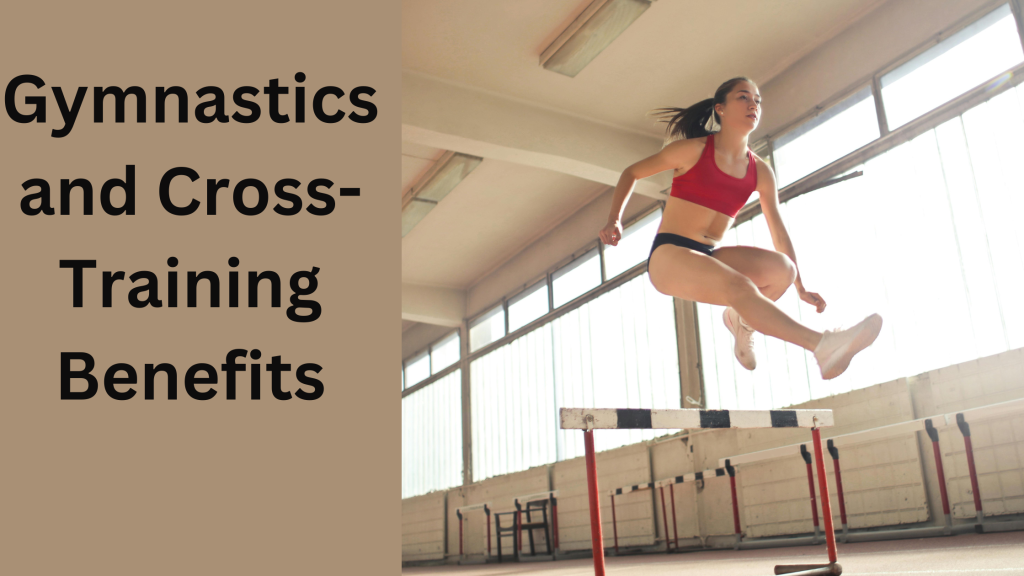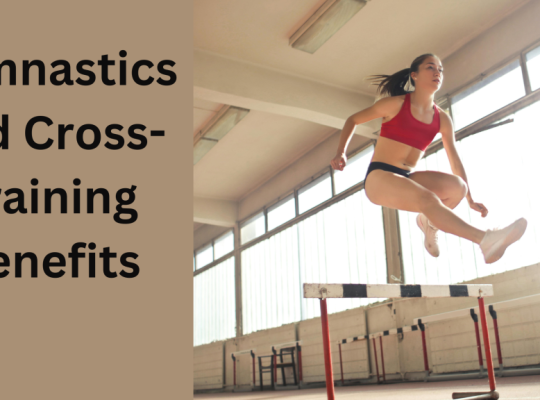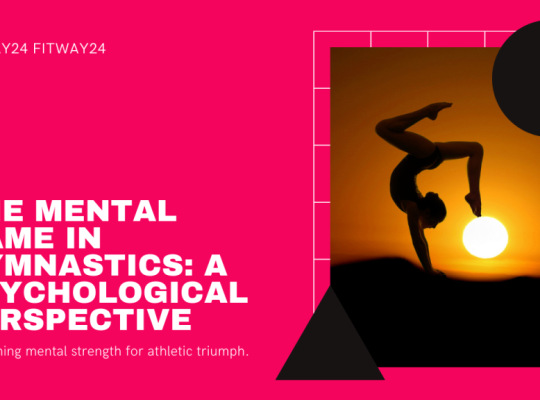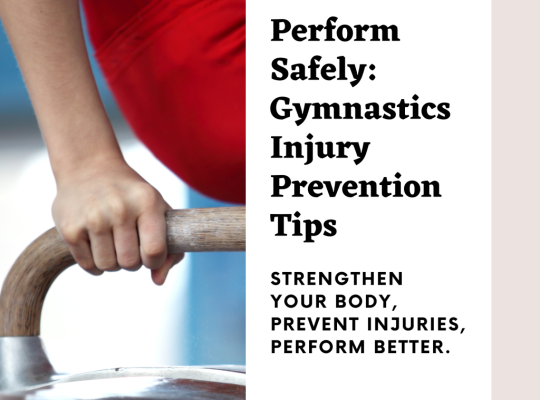Introduction
Gymnastics is an exhilarating sport that demands strength, agility, and precision. However, to excel in gymnastics, athletes can benefit greatly from incorporating cross-training into their routines.
Cross-training involves engaging in a variety of exercises and activities beyond gymnastics to enhance overall fitness and performance. In this article, we will explore the myriad benefits of combining gymnastics with cross-training, from physical improvements to mental resilience and injury prevention.
Physical Benefits
Gymnastics is renowned for building strength and flexibility, but cross-training can further enhance these attributes. Gymnasts often focus on bodyweight exercises like push-ups, pull-ups, and core work to develop strength. By incorporating weightlifting, resistance training, or calisthenics into their routines, gymnasts can target specific muscle groups more effectively, leading to greater overall strength and power.
Cross-training activities such as cycling, swimming, or running provide cardiovascular benefits, improving endurance and stamina, which are essential for sustaining high-intensity gymnastics routines.
Moreover, gymnastics and cross-training exercises together contribute to improved flexibility, crucial for executing complex movements with ease and reducing the risk of injury.
Skill Enhancement
Cross-training can also enhance gymnastics skills by promoting the development of transferable abilities. Many sports and activities share fundamental movement patterns with gymnastics, such as balance, coordination, and spatial awareness.
By engaging in activities like dance, martial arts, or rock climbing, gymnasts can hone these skills in different contexts, leading to greater overall proficiency. For example, weightlifting can improve explosive power for gymnastics vaults, while yoga can enhance balance and body control for beam routines.
Diversifying training through cross-training exposes gymnasts to a broader range of movements, contributing to a more well-rounded skill set and better adaptability in competition settings.
Injury Prevention and Rehabilitation
Injuries are a common concern in gymnastics due to the high-impact nature of the sport.
However, cross-training can play a vital role in injury prevention and rehabilitation. Gymnastics places repetitive stress on certain muscle groups and joints, increasing the risk of overuse injuries.
Cross-training allows athletes to balance muscle development by targeting complementary muscle groups that may be neglected in gymnastics training. For example, strengthening the posterior chain through exercises like deadlifts or rowing can alleviate strain on the lower back, a common area of injury for gymnasts.
Additionally, cross-training activities like swimming or cycling provide low-impact alternatives for cardiovascular conditioning, allowing athletes to maintain fitness while reducing stress on joints during injury recovery periods.
Mental and Psychological Benefits
Related article: Take It Easy: Your Guide to Low-Impact Workouts
Beyond physical improvements, cross-training offers numerous mental and psychological benefits for gymnasts. The repetitive nature of gymnastics training can lead to mental fatigue and burnout over time.
Incorporating cross-training activities introduces variety and novelty into the routine, reducing boredom and increasing motivation. Moreover, mastering new skills in different disciplines boosts confidence and resilience, instilling a sense of accomplishment that carries over into gymnastics practice.
The mental freshness gained from cross-training can enhance focus and concentration during gymnastics training sessions and competitions, ultimately leading to improved performance.
Longevity in Sport
Maintaining longevity in gymnastics requires a balanced approach to training that minimizes the risk of burnout and overuse injuries.
Cross-training provides a sustainable solution by diversifying training stimuli and reducing the physical and mental strain associated with repetitive gymnastics routines. By incorporating a variety of activities into their training regimen, gymnasts can prolong their careers and continue to enjoy the sport for years to come.
Furthermore, cross-training fosters a love for movement and fitness that extends beyond gymnastics, promoting a lifelong commitment to health and wellness.
Social and team-building
Cross-training offers opportunities for social interaction and team building, which are essential aspects of athletic development. Group classes or team sports provide gymnasts with a supportive community of peers who share similar interests and goals.
Participating in cross-training activities outside of gymnastics fosters teamwork, communication, and camaraderie, qualities that are invaluable in both sport and life.
Additionally, the shared experiences and friendships formed through cross-training contribute to a positive training environment, enhancing motivation and morale.
Personalization and Adaptation
One of the greatest strengths of cross-training is its flexibility and adaptability to individual preferences and goals.
Gymnasts can tailor their cross-training activities to address specific strengths and weaknesses, allowing for a more personalized approach to skill development. Whether it’s incorporating yoga for flexibility, rock climbing for upper body strength, or swimming for cardiovascular endurance, athletes have the freedom to choose activities that complement their gymnastics training.
Furthermore, cross-training routines can be adjusted according to the athlete’s fitness level, ensuring that training remains challenging yet manageable.
What are some examples of cross-training activities for gymnasts?
Here are some examples of cross-training activities that can benefit gymnasts:
Weightlifting:
Incorporating weightlifting exercises such as squats, deadlifts, and bench presses can help gymnasts build strength and power in their major muscle groups, including the legs, back, and upper body.
This additional strength can improve performance in various gymnastics skills, such as tumbling passes and strength holds on apparatuses.
Yoga:
Yoga focuses on improving flexibility, balance, and body awareness, which are essential components of gymnastics.
Practicing yoga can help gymnasts enhance their range of motion, reduce the risk of injury, and develop better control over their movements.
Poses like downward-facing dog, warrior, and pigeon pose can be particularly beneficial for gymnasts.
Pilates:
Pilates is a form of exercise that targets the core muscles, including the abdominals, back, and pelvic floor.
Strengthening these muscles can improve stability and control, which are crucial for maintaining proper form and executing gymnastics skills with precision.
Pilates exercises like the hundred, single-leg circles and plank variations can help gymnasts develop core strength and stability.
Dance:
Dance classes, such as ballet or contemporary dance, can enhance gymnasts’ grace, coordination, and musicality.
Dance movements often involve fluid transitions between poses and sequences, which can translate well to gymnastics routines.
Learning to move rhythmically and expressively can add an artistic flair to gymnastics performances.
Swimming:
Swimming provides a low-impact form of cardiovascular exercise that improves endurance and stamina without putting stress on the joints.
Incorporating swimming sessions into their training regimen can help gymnasts build cardiovascular fitness, which is essential for sustaining energy throughout long routines and competitions.
By incorporating these cross-training activities into their regimen, gymnasts can enhance their overall fitness, develop complementary skills, and reduce the risk of injury, ultimately improving their performance in the sport.
Conclusion
Incorporating cross-training into gymnastics routines offers a multitude of benefits that extend beyond physical improvements. From enhancing strength and flexibility to promoting mental resilience and injury prevention, cross-training plays a vital role in maximizing gymnastics performance and longevity in the sport.
By embracing a diversified training approach that encompasses a variety of activities, gymnasts can unlock their full potential and enjoy sustained success in their athletic pursuits.
FAQs
What is cross-training, and how does it relate to gymnastics? Cross-training involves engaging in a variety of exercises and activities beyond gymnastics to enhance overall fitness and performance. It complements gymnastics training by targeting different muscle groups, improving cardiovascular health, and preventing overuse injuries.
What are the physical benefits of cross-training for gymnasts? Cross-training improves strength, endurance, and flexibility, essential components of gymnastics performance. It also reduces the risk of injury by promoting balanced muscle development and providing low-impact alternatives for cardiovascular conditioning.
How does cross-training enhance gymnastics skills? Cross-training exposes gymnasts to a broader range of movements and disciplines, promoting the development of transferable skills such as balance, coordination, and spatial awareness. Activities like dance, martial arts, and yoga complement gymnastics training and contribute to a more well-rounded skill set.









